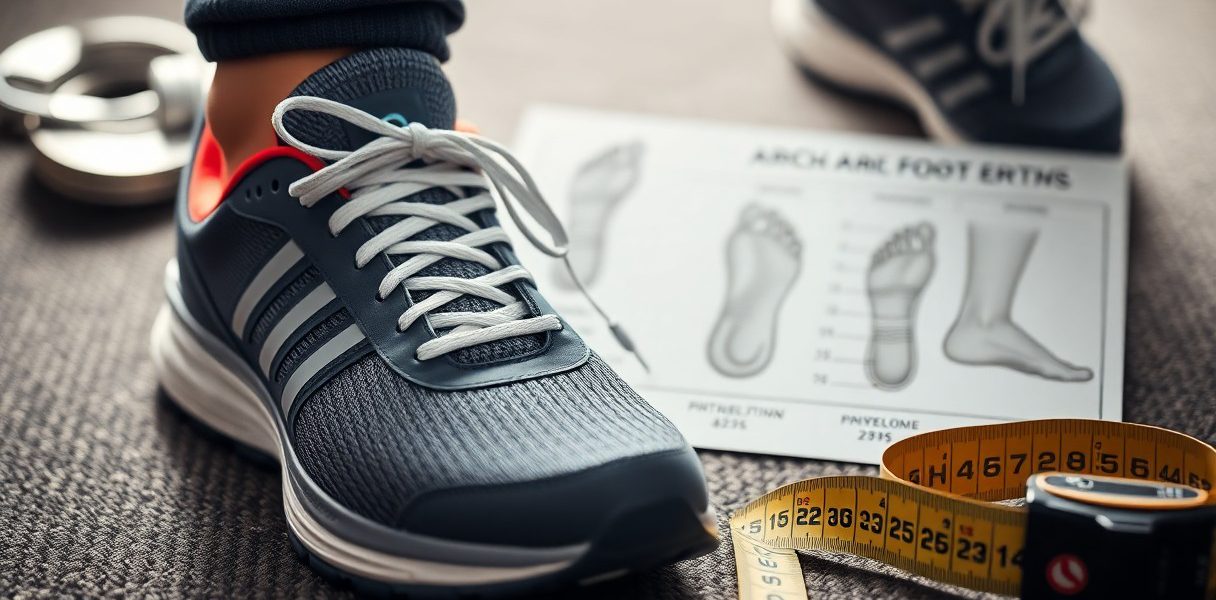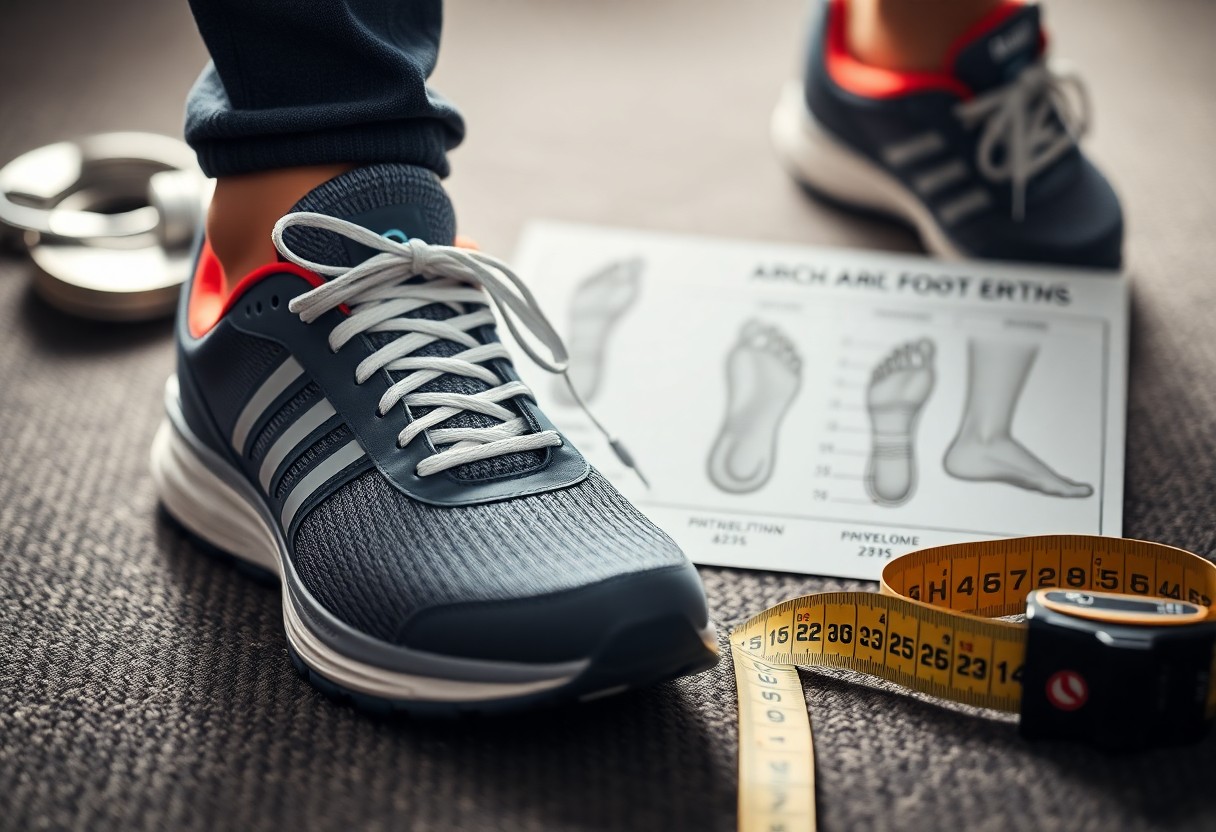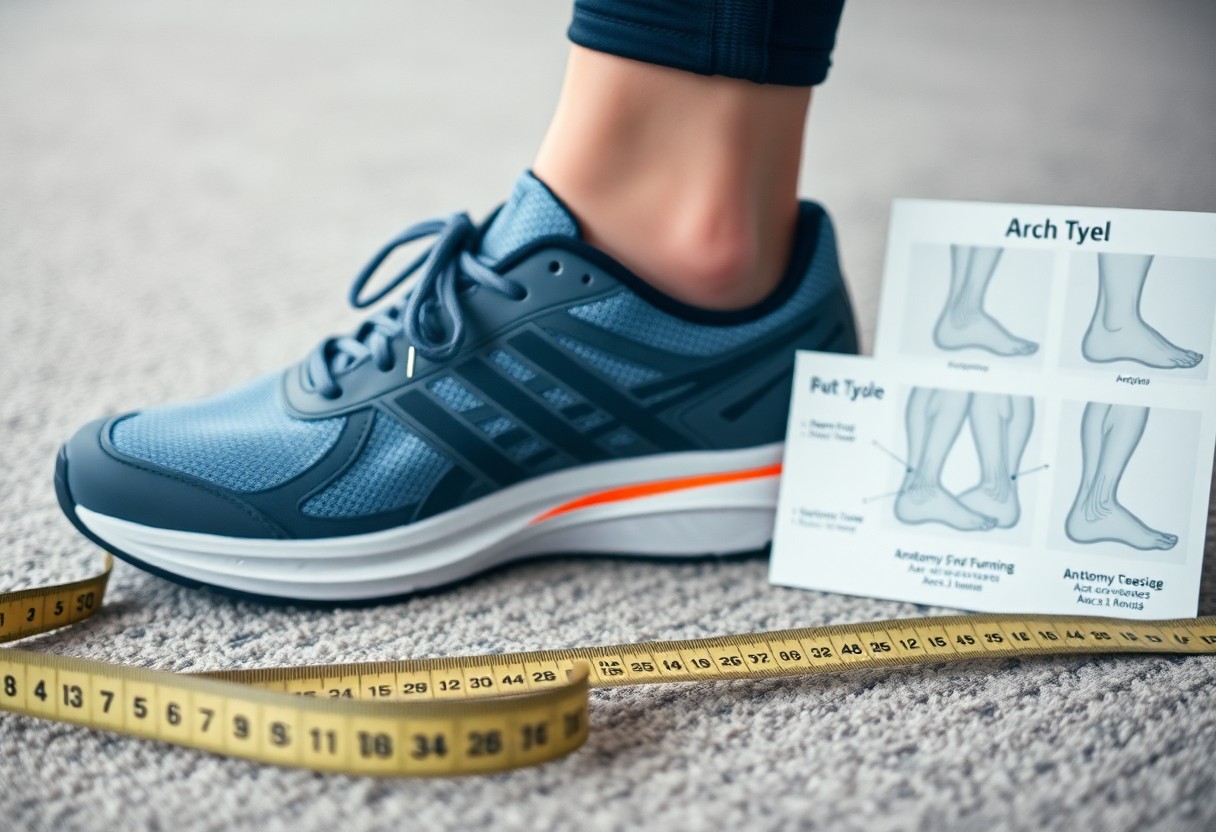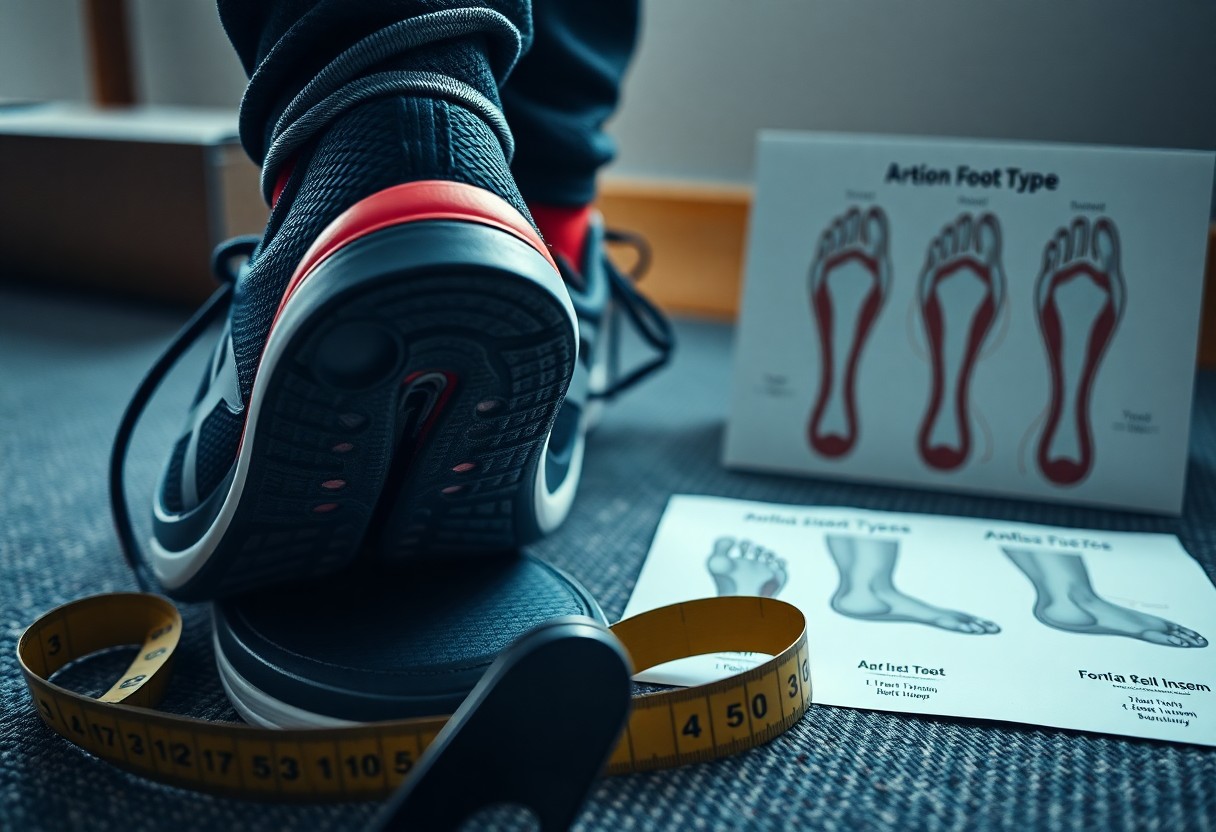
Arch Support: Essential Insights for Your Shoe Needs
Supporting your feet properly goes beyond simply adding arch support to your footwear. Surprisingly, most people do not actually need arch support in their shoes. Research indicates that forgoing arch support can improve the strength of your foot muscles. This is because relying on artificial support over time can lead to muscle atrophy. The human foot is crafted with natural arches that flex and adapt to different surfaces, and restricting this natural movement with rigid supports can negatively impact your foot health in the long run. This in-depth article aims to shed light on the science of arch support, empowering you to make informed decisions regarding your foot health.

Delving Into the Historical Evolution of Arch Support in Footwear
The natural support system of your feet has played a crucial role in the design of footwear throughout history. The concept of arch support became prominent in the 1920s when Dr. William Scholl introduced commercial orthotics. Before this innovation, people relied on the natural strength and flexibility of their feet. This historical perspective not only highlights the evolution of our understanding of foot health but also calls for a reevaluation of contemporary footwear design practices that may not align with the natural mechanics of our feet.
Tracing the Shift from Traditional Footwear to Modern Designs
The journey of footwear reveals that ancient civilizations primarily used simple, flat sandals or often went barefoot, facilitating natural development and strength of the foot. Our ancestors maintained robust and flexible feet without the need for artificial supports, a trend that is echoed in research regarding indigenous groups who continue to wear traditional footwear. This historical context emphasizes the importance of natural foot mechanics for sustaining foot health, illustrating how modern footwear trends frequently overlook these foundational principles.
Investigating the Effects of Modern Shoe Design on Foot Health
By the mid-20th century, particularly during the 1950s, shoe manufacturers began integrating built-in arch support as a common feature in footwear. Presently, most modern shoes incorporate structured arch support, a trend that has become the standard despite limited scientific evidence supporting its necessity for everyone. This shift reflects changing consumer expectations and industry practices, raising critical questions about the implications of such designs on foot health. With around 70% of contemporary shoes equipped with arch support, it is essential to assess whether this dependence serves to enhance or undermine foot health.
Studies published in the Journal of Foot and Ankle Research have shown that excessive reliance on arch support may lead to muscle weakness in your feet. As a result, many podiatrists are now recommending periodic barefoot walking and the use of minimally supportive shoes to help maintain natural foot strength and promote overall foot health.

Diving Deep Into the Intricate Structure of the Human Foot
With a composition of 26 bones, 33 joints, and over 100 muscles, your feet function most effectively when allowed to move freely. The arch of the foot is a self-supporting structure that gains strength through regular activity and can weaken when exposed to artificial support. Research indicates that 75% of individuals wearing conventional shoes with arch support experience a decline in foot muscle activity, which can subsequently lead to reduced natural strength over time, underscoring the necessity of allowing your feet to engage in unrestricted movement.
Unveiling the Advantages of Natural Foot Mechanics
The design of your foot is an engineering marvel, featuring an intricate self-supporting system. Walking barefoot or in minimal shoes allows your feet to experience a complete range of motion, enabling your arches to flex and develop naturally. Studies suggest that those who frequently walk barefoot or choose minimal shoes cultivate stronger foot muscles and more stable arches compared to individuals reliant on supportive footwear. This reinforces the importance of natural movement in maintaining foot health, as it supports the body’s capacity to uphold its structural integrity.
Effective Methods for Boosting Foot Muscle Function and Development
Interrupting your foot’s natural movement can impede its development. Your foot muscles need regular engagement through natural activities to preserve their strength. Research published in Nature indicates that wearing shoes lacking arch support promotes the growth of stronger intrinsic foot muscles. This connection underscores the importance of natural movement for optimal foot health, especially for those experiencing discomfort or weakness in their feet.
Moreover, it’s vital to acknowledge the repercussions of donning shoes with built-in arch support. Wearing these types of shoes can cause foot muscles to become less engaged, potentially leading to weakness over time. Studies have shown that transitioning to minimal footwear can significantly increase foot muscle strength by as much as 60% within eight weeks. However, it’s essential to approach this transition carefully, particularly for those with existing foot conditions, to prevent injury and facilitate a healthy adjustment process.
Analyzing Scientific Research and Evidence on Foot Health
If you’re keen to understand the science behind arch support, numerous studies illustrate that your feet can strengthen without artificial support. Various investigations reveal that natural foot movement enhances muscle development and arch stability, emphasizing the critical role of biomechanics in foot health and the potential dangers of over-dependency on artificial supports.
Highlighting Key Scientific Studies on Arch Support
Among the most significant findings, a study published in Nature indicates that individuals who wear minimal footwear develop foot muscles that are 50% stronger compared to those in traditional supportive shoes. This evidence supports the idea that regular movement and exercise enable your feet to maintain their arches naturally, reinforcing the benefits of selecting appropriate footwear.
Comparative Examination of Footwear Choices Across Different Cultures
Contrasting Traditional and Minimal Footwear Users
| Traditional Shoe Users | Minimal Shoe Users |
| Exhibit higher rates of flat feet | Demonstrate superior arch strength |
| Show weaker foot muscles | Exhibit stronger foot muscles |
An extensive analysis of diverse populations reveals notable differences in foot health. The structure of your feet can adapt dramatically based on the types of shoes you wear, underscoring the importance of actively evaluating your footwear choices.
Insights from Global Population Studies
| Developed Countries | Barefoot Communities |
| 20% flat foot occurrence | 3% flat foot occurrence |
| Higher reliance on arch support | Natural arch strength |

Unpacking the Paradox of Support in Footwear Choices
Challenging widely accepted beliefs, over-reliance on arch support in shoes may undermine your feet’s natural strength. The human foot is intricately designed, featuring a complex system of muscles, tendons, and ligaments that work together to provide natural support. When artificial arch support substitutes for this function, your foot muscles could become less engaged, leading to gradual weakening and a reduced ability to perform daily activities effectively.
Understanding the Cycle of Dependency on Arch Support
The ongoing use of arch support creates a harmful cycle. Feet can become overly dependent on external support, resulting in muscle atrophy. Research indicates that 70% of individuals who regularly use arch support report increased discomfort when walking without their supportive shoes, illustrating the development of this dependency, which can detrimentally affect overall mobility and comfort.
Connecting Muscle Weakness with Overuse of Arch Support
Wearing shoes designed with built-in arch support may weaken your intrinsic foot muscles by as much as 50%, according to findings in Nature. This weakening can compromise your feet’s natural arch support system, potentially leading to conditions such as flat feet and other foot-related issues. It’s crucial to recognize that this muscle weakness may also affect your overall posture and balance, as weakened foot muscles can negatively influence your body’s stability. Research indicates that individuals who switch to minimal footwear often see a 60% increase in foot muscle strength within six months, underscoring the advantages of avoiding unnecessary supports.
Exploring Natural Solutions for Enhanced Foot Health
For those interested in stepping away from traditional arch support, various natural solutions are available that can fortify foot strength. These methods focus on allowing your feet to function as intended, encouraging the development of stronger foot muscles and more stable arches through natural movement and practices that nurture foot health.
Adopting Minimalist Footwear for Optimal Natural Movement
Minimalist shoes, featuring zero drop soles, wide toe boxes, and flexible materials, encourage natural foot movement. These designs allow your feet to move freely, aiding in the maintenance of proper foot mechanics and the promotion of natural arch strength. Research suggests that regularly wearing minimal footwear can increase foot muscle strength by up to 60% through daily activities, highlighting the importance of selecting the right footwear that aligns with your lifestyle.
Safe Strategies for Transitioning to Minimal Footwear
When considering switching to minimalist footwear, it’s crucial to take a careful and gradual approach to ensure your safety and comfort. Begin by wearing minimal shoes for short intervals, gradually extending the duration over several weeks. This strategy helps avoid overuse injuries as your feet adjust to their newfound flexibility, facilitating a smoother transition that supports long-term foot health.
A successful transition should ideally involve specific foot-strengthening exercises. Start with 10-15 minutes daily in minimal shoes, adding an extra 5-10 minutes each week. Incorporate exercises such as toe spreads and short barefoot walks on safe surfaces. This gradual approach allows you to reduce the risk of common transition injuries while effectively building your natural arch strength, ultimately fostering better overall foot health.
Considering Individual Medical Factors for Optimal Foot Health
Recognizing that your foot health requires tailored attention is vital. While natural foot movement contributes positively to muscle strength, certain medical conditions may require specific support. Elements such as your foot structure, activity levels, and any pre-existing conditions will shape your ideal footwear needs, stressing the importance of personalized assessments.
Identifying Conditions That May Necessitate Arch Support
In contrast to common beliefs, arch support is not universally necessary. However, individuals suffering from acute injuries, severe flat feet, or specific medical conditions may benefit from temporary or ongoing arch support. Research indicates that only 10-20% of the population genuinely requires specialized arch support for medical purposes, highlighting the significance of personalized assessments to ensure optimal foot health.
Guidelines for Comprehensive Professional Foot Health Evaluations
To make well-informed decisions about your footwear choices, consulting a foot health professional is advisable. Thorough assessments should include gait analysis, evaluation of foot structure, and examination of medical history. These components are critical for determining whether you need arch support or if transitioning to minimal footwear is a suitable option for your specific circumstances.
Expert guidance from a qualified professional can offer clarity and direction for your foot health journey. A comprehensive evaluation should encompass measuring arch flexibility, assessing muscle strength, and analyzing walking patterns. Your healthcare provider should also consider your daily activities and any past foot injuries to create an effective treatment plan tailored to your needs and lifestyle.
Assessing Footwear Choices and Their Effects on Foot Health
Your selection of footwear has a substantial impact on your foot health. You now realize that arch support is not essential for the majority and could actually weaken foot muscles over time. Your feet possess inherent strength and flexibility, operating best when allowed to function as they were naturally designed. If you’re contemplating a transition to minimal footwear, initiating this process gradually will enable your feet to adapt effectively. The evidence strongly supports that allowing your feet to function without artificial support can result in stronger muscles and improved foot health for most individuals. Always consider your personal needs and seek advice from a foot health professional for specific concerns regarding your foot health.
Common Questions Regarding Arch Support and Foot Health
Do healthy feet really need arch support in footwear?
Most healthy feet do not need arch support in shoes. Research indicates that natural foot strength develops more efficiently without artificial support. The muscles and arches of the foot perform optimally when allowed to operate naturally. This is consistent with findings on populations that frequently go barefoot or choose minimal footwear, which show stronger foot muscles and fewer arch-related complications.
Can using arch support weaken feet over time?
Yes, prolonged dependence on arch support can lead to weakened foot muscles. When artificial support takes over the function of foot muscles, these muscles become less active and gradually lose strength. This can establish a cycle of dependency. Research published in Nature has shown that individuals who regularly wear conventional shoes with arch support tend to have weaker foot muscles compared to those opting for minimal footwear.
Who might genuinely require arch support in their shoes?
Certain individuals with specific foot conditions, injuries, or medical issues may indeed benefit from arch support. This includes those diagnosed with flat feet, certain foot injuries, or structural abnormalities. However, these cases should be evaluated by a foot health professional who can develop an appropriate treatment plan. The goal should be to restore natural foot function whenever possible, rather than relying on permanent support.
The Article Arch Support: Essential Facts About Shoe Necessities Was Found On https://limitsofstrategy.com
The Article Arch Support: Key Insights on Essential Shoe Needs First Appeared ON
: https://ad4sc.com








